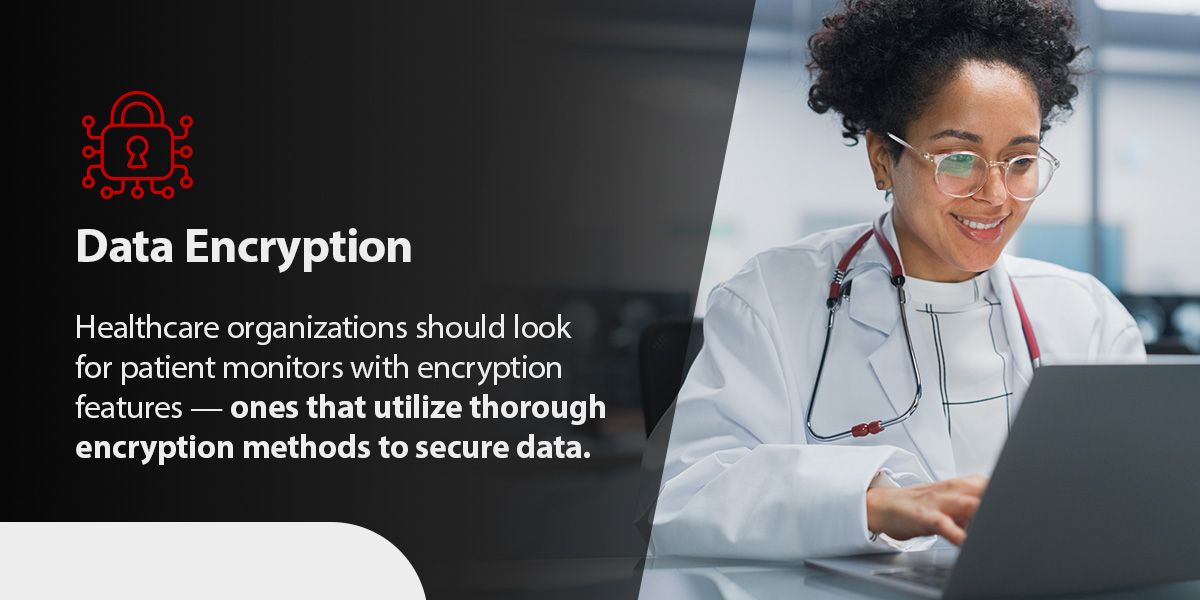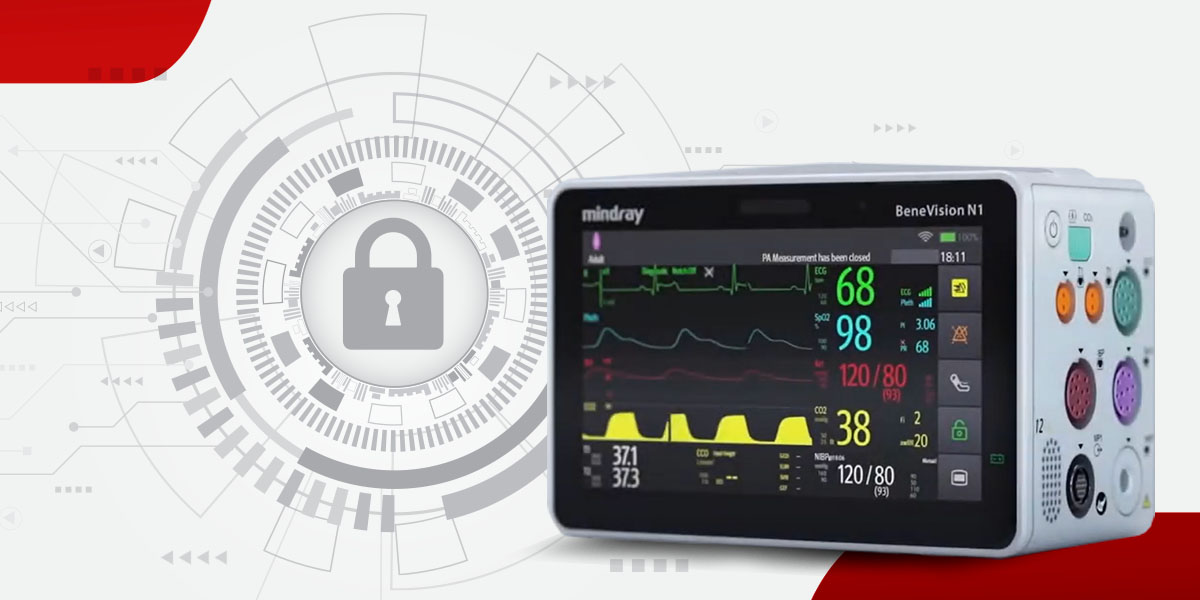Medical device cybersecurity is more necessary than ever as healthcare facilities continue to expand their digital transformations and become more interconnected. While adopting new technologies brings immense benefits, like improved efficiency and greater diagnostic accuracy, they also expose healthcare facilities to cybersecurity threats that can severely disrupt patient care. Organizations must establish a comprehensive plan and monitor their systems around the clock to avoid becoming victims of cyber incidents. This proactive approach is essential for mitigating risks that could expose patients’ personally identifiable information (PII) or protected health information (PHI) or cause downtime that interrupts care and potentially threatens patient safety.
Beyond the immediate impact on patient care, healthcare institutions must also recognize the potential for cybersecurity incidents to severely damage their reputation and lead to substantial fines and increased insurance premiums. Therefore, implementing a robust medical device cybersecurity protocol is imperative. By prioritizing awareness and preparation, healthcare institutions can ensure the continuity of care in today’s digital world, protecting patients' well-being first and their integrity second.
Understanding the Landscape of Patient Monitoring Systems and Cybersecurity Risks
Threats to cyber security in healthcare take various forms, including phishing attacks, malware, data breaches, and, most commonly, ransomware—a type of attack in which hackers hold a victim’s data hostage until they pay a large sum of money or “ransom,” to get their information back.
In 2023, healthcare facilities experienced record numbers of ransomware attacks. According to an analysis by the cybersecurity firm Emsisoft, 46 hospital systems suffered ransomware attacks in 2023, up from 25 in 2022 and 27 in 2021. Across those 46 attacks, at least 141 hospitals were directly affected and experienced disruption due to the lack of access to IT systems and patient data.1 Due to these rising threats, the federal government is introducing hospital cybersecurity mandates, including free training for smaller facilities.2
Understanding the Impact of Security Threats on Healthcare Institutions
High-quality care is largely dependent on effective patient monitoring. Sophisticated interconnected monitoring devices provide clinicians with thorough and insightful data right at the point of care, enhancing clinical decision-making and enabling proactive interventions. Despite the many benefits of innovative monitoring technology, interconnected solutions introduce an increase in cybersecurity risk.
Patient monitoring devices generate substantial amounts of data across all types of systems. These technologies continuously gather, store, analyze, and display crucial patient data, from vital signs such as blood pressure and heart rate to detailed information on capnography and electrocardiography. With advancements like integrating in-hospital monitors with electronic health records, these systems can also contribute to more comprehensive patient records, incorporating personal health details such as medical history and treatment plans.
Connecting monitoring devices to the internet and other hospital networks has transformed healthcare delivery, facilitating live patient monitoring and the seamless transfer of information. However, these connections can create vulnerabilities that cybercriminals may exploit to access these devices and the sensitive data they collect.
Common Forms of Medical Device Cybersecurity Attacks
Threats to cybersecurity in healthcare take various forms, including phishing attacks, malware, data breaches, and, most commonly, ransomware—a type of attack in which hackers hold a victim’s data hostage until they pay a large sum of money or “ransom” to get their information back. According to a 2024 report, 67% of healthcare organizations reported they had been targeted within the past year. Due to these rising threats, the federal government is introducing hospital cybersecurity mandates, including free training for smaller facilities.
Cybercriminals can also compromise medical devices, disrupt facility operations, or manipulate treatment plans or patient data. As clinicians rely on accurate data for medical decision-making such as diagnoses and treatment plans, the potential for data tampering is a cause for serious concern.
The Consequences of Healthcare Cybersecurity Breaches
The consequences of a cybersecurity breach can be severe for healthcare facilities and their patients, resulting in the following:
Impact on Patient Care
A cybersecurity breach can impact patient care in various ways, including delaying diagnosis and treatment. For example, an American Hospital Association (AHA) survey found that 74% of hospitals reported a direct impact on patient care resulting from the Change Healthcare cyberattack. Almost 40% of patients reported having difficulty accessing care due to delays resulting from the incident.
An earlier incident experienced by a major metropolitan children's hospital also illustrates the severe impact of such threats on patient care. During the attack, key hospital systems were targeted, resulting in significant disruptions to daily operations and patient services. The distributed denial-of-service (DDoS) attack overwhelmed the hospital's networks, hampering critical communication channels and access to electronic medical records (EMR), leading to treatment delays and compromised care delivery. This incident underscores the urgent need for healthcare institutions to build resilient cybersecurity infrastructures to withstand breaches and ensure patient safety.
Unfortunately, when cyberattacks occur, essential medical devices are often just collateral damage, as criminals go after their primary target, the EMR. Cybercriminals prioritize this target because it hosts PHI. This information is valuable to criminals because one’s health history can’t be altered, unlike social security numbers or credit card information.
Criminals can use PHI to target individuals with scams that exploit the victim’s medical conditions or victim settlements. They can also use PHI to create false insurance claims, allowing them to buy and resell medical equipment. Some criminals may use PHI to gain access to prescriptions for their own use or for resale.
Reputational Damage
Cybersecurity attacks can significantly tarnish the reputation of healthcare organizations, leading to long-lasting consequences. These incidents tend to capture headlines, especially when patient care is compromised, making breaches a major public concern. Such events can severely undermine public perception, resulting in diminished trust and ultimately financial loss.
According to a 2023 survey, 66% of respondents would not trust a company that experiences a data breach.. In the healthcare realm, trust is foundational to obtaining critical information from patients and delivering quality care.
Financial Repercussions
Beyond the reputational damage and loss of patient trust that organizations suffer due to cybersecurity incidents, there are significant financial repercussions. In 2024, the average cost of a healthcare data breach was $9.77 million. Multiple expenses can be involved, from fines and penalties to losses due to treatment delays and system shutdowns. The expensive and complex remediation process can also further exacerbate the financial strain. Additionally, these incidents force insurers to reassess the risk profiles of affected organizations, often leading to higher premiums for cybersecurity insurance.
Absorbing these heightened costs can result in budget constraints for healthcare providers, potentially affecting funding for patient care services and investments in new technology. Without robust defenses, healthcare facilities face operational chaos and an inability to provide timely and effective care, putting patient safety at risk.
Establishing a Robust Medical Device Cybersecurity Plan
To avoid financial repercussions, a loss of reputation, and, most importantly, disruptions to patient care, a proactive approach to medical device cybersecurity is critical. While many organizations might have the basics covered in their security protocol, healthcare institutions must consider medical devices in their cybersecurity planning.
Here are seven key components of a strong cybersecurity plan:
1. Software and Patch Updates
Regular system updates are essential for increasing medical device cybersecurity. Outdated software is prone to security gaps that cybercriminals often exploit to gain unauthorized entry. IT professionals in healthcare must prioritize regular software updates and patch management for all interconnected medical devices, including patient monitors.However, older, legacy systems typically cannot support these updates, which leaves them at high risk for cyberattacks. Healthcare facilities should establish a process for managing legacy devices and purchasing new devices essential for patient care.
2. Asset Management
Identifying assets and cataloging medical devices, as well as which software and hardware they have, helps determine the equipment most susceptible to attack. Understanding how these assets all integrate can help to assess vulnerabilities further. From there, facilities can build out tiers based on importance and determine which systems cannot afford to have any downtime (i.e., an anesthesia machine) versus those that can be offline without seriously impacting patient care (i.e., the EMR).
3. Data Encryption
When using connected medical devices, robust encryption methods are essential to shield sensitive health data at every stage, both during transmission and storage. Without such measures, attackers could intercept this information or easily gain unauthorized access to the device.

Improved healthcare cybersecurity starts with choosing more secure devices. For example, healthcare organizations should look for patient monitors with encryption features — ones that utilize thorough encryption methods to secure data in transit and at rest.
4. Authentication and Access Controls
Hospitals and clinics should rely on multi-factor authentication in addition to encryption. By requiring multiple authentication steps, such as biometric scans and text messages, organizations can verify the identities of those accessing sensitive information. This approach adds an extra layer of security to further minimize the threat of unauthorized access.
Strong access control mechanisms are also necessary, as these measures determine what an authenticated user or device can do. Implementing the principle of minimal privilege is recommended, granting individuals and endpoints only the necessary access rights. For example, this could involve patient-end devices being able to transmit but not retrieve information from the provider's systems.
5. Vulnerability Assessments and Security Audits
Conducting regular vulnerability assessments is crucial for a proactive patient data security strategy. By promptly identifying and addressing potential weaknesses, healthcare organizations can drastically strengthen their medical devices' defense against possible cyber threats.
Medical facilities should also implement periodic security audits to review their overall security posture and compliance with laws like HIPAA. Regulations like HIPAA's Security Rule provide a framework for protecting patient data and preserving the privacy of health information, so detecting and correcting areas of noncompliance is crucial.
6. Incident Response Planning
Even after implementing robust security measures and proactive strategies, security breaches are possible. Therefore, a well-defined incident response plan is key to rapidly and effectively managing security incidents.
The plan should provide a framework for mitigating damage, restoring data, and swiftly resuming operations. It should also include steps for alerting patients and the relevant regulatory bodies, as well as implementing strategies to help avoid future incidents.
Collaboration among various departments — IT, Administration, BioMed, Clinical, and Security — is essential for creating an effective incident response plan, so all personnel are prepared should a cybersecurity attack occur. A cross-functional approach encourages the integration of protocols at every level, ensuring that all aspects of patient care remain protected during a data breach.
7. Staff Training and Awareness
As 95% of all data breaches are caused by human error, education about the significance of medical device cybersecurity is paramount for mitigating risks. Additionally, healthcare organizations must ensure all users understand fundamental security best practices.
Healthcare professionals should undergo training programs that cover areas such as using strong passwords, avoiding suspicious downloads or links, and promptly reporting dubious activities. Educating clinicians at every level helps ensure that all personnel are knowledgeable about medical device cybersecurity and confident enough to spot potential threats to their systems. It is also important that healthcare professionals are made aware of the impact cybersecurity threats can have on patient care if the systems experience downtime.
Protect Patient Data With Mindray North America
Healthcare institutions that do not consider medical devices when implementing security measures risk disrupting patient care. While cybercriminals may be focused on obtaining PHI, healthcare facilities must do everything possible to ensure medical devices do not experience downtime during these events. Protecting the most important assets, such as anesthesia machines, ventilators, ultrasound machines, and patient monitoring devices, can be the difference between life and death for critical care patients.
Ensuring continuity of patient care during a cybersecurity incident requires a multifaceted approach involving preparation, collaboration, and policy adherence. At Mindray, cybersecurity is an essential priority for safeguarding sensitive data and defending patient safety. We are continuously elevating our cybersecurity measures to align with industry standards and certifications.
Contact us today to learn more about our advanced medical technologies.

